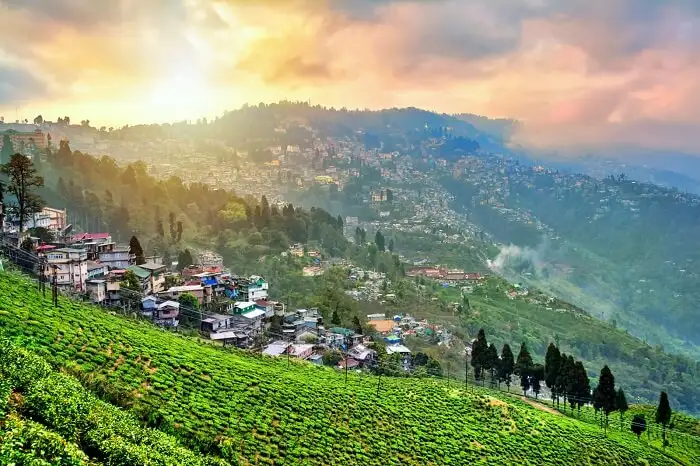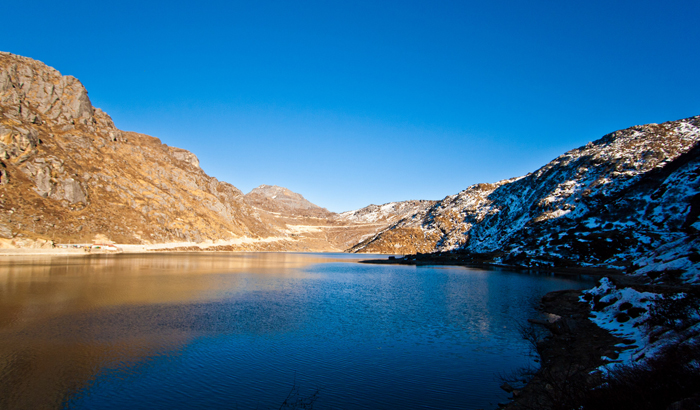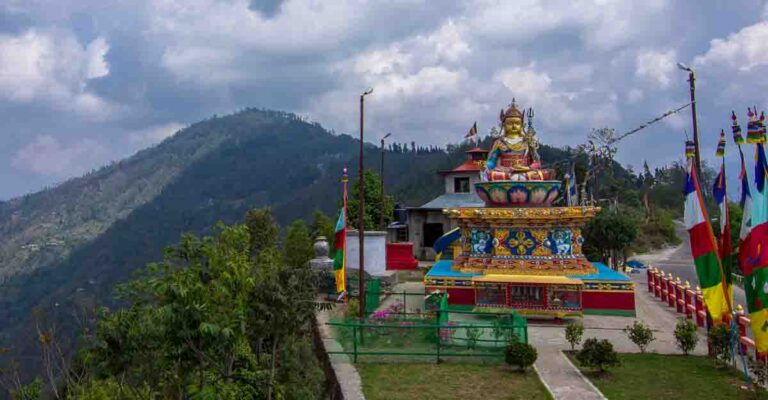How to Plan a Trip to Bhutan
Introduction
Bhutan has an exceptional quality; the uncomplicated yet captivating country can touch your soul, soothe it with peace, and even mend broken hearts. The words used to describe Bhutan’s beauty are in their purest form, even though they may seem clichéd: a healthy climate, breathtaking views, and majestic monasteries. Bhutan is opening borders from 23rd September so we have prepared this travel guide for you.
It can be a wonderful experience that you will never forget to travel to and explore Bhutan. So, are you also interested in having this extraordinary experience? This will provide you with the best travel guide to Bhutan so you can organize your trip there from India as efficiently as possible.
Routes to Bhutan from India
By Air: It’s simple to fly to Bhutan from India. Two direct airlines fly to Paro, the only international airport in Bhutan, from Delhi, Gaya, Bagdogra, Kolkata, Mumbai, and Guwahati. These airlines are Drukair and Bhutan Airlines. If the airline is contacted via email, special rates for Indian travelers may be made available.
By Rail: Traveling by rail is among the least expensive ways to get from India to Bhutan. The closest railroad station to Jaigaon, an Indian town on the border with Bhutan, is Hasimara. It is located 17 kilometers away from Jaigaon.
Read : Top 10 Tourist Attractions In Sikkim
From Kolkata (690 km), Delhi (1663 km), Ranchi (749 km), and Kanpur, some trains go to Hasimara (1197 km). In New Jalpaiguri, there is a second station with good connectivity. On the IRCTC website of Indian Railway, you can find the tickets and the schedule. Although they take longer, trains are still an excellent option for travelers on a tight budget.
By Road: Jaigaon in West Bengal is where travelers from India frequently enter Bhutan. Phuentsholing, the Bhutanese border town, is only 4.3 kilometers away. Private cabs are available between the two locations. Prepaid taxis are also available at Bagdogra Airport. Those on a tight budget can hire a cab directly from the cab drivers.
Best way to reach Bhutan
For those on a tighter budget: Take a flight to Bagdogra and then take a cab to Phuentsholing (Prepaid Taxis charge about INR 2500). Additionally, before purchasing tickets for the Bagdogra flight, check with Drukair to compare prices. If the Bhutanese airline offers a good deal, book your flights immediately.
For Other Travelers: Flying directly to Paro from India is the most effective way to get to Bhutan. If you take a flight out of Bagdogra, the flying time from Delhi to Paro is at its shortest, taking about 2.5 hours.
Bhutan Opening Borders
Except for Phuentsholing, accessible without a permit, you can visit three tourist destinations on a regular Bhutan Tourist Permit: Thimphu, Paro, and Punakha. The exciting fact is Bhutan Opening borders on the 23rd of September. So let’s talk about these four places that can be seen with a standard tourist permit.
#1 Phuentsholing
The border town of Bhutan, Phuentsholing, accurately represents the whole nation. Clear surroundings, efficient traffic, neat homes and businesses, and people who look happy and humble. Due to its small size and lack of attractions, Phuentsholing can be explored in a single day.
The leading tourist destination in this area is Karbandi Monastery, which offers a breathtaking view of Phuentsholing town and the Bengal plains. The Monastery is well-known among the locals as a location where prayers for fertility or childbirth are reputed to be answered. The Buddhist shrine to Guru Rinpoche, Zangtho Pelri Lhakhang, situated in the town’s center, is another attraction.
Phuentsholing has a foreign goods store where you can purchase clothes for a meager cost. In addition, many restaurants in Phuentsholing can order food from Bhutan, China, or India.
#2 Thimpu
Thimphu is the country’s capital. You can learn everything you need to know about Bhutan in Thimphu. From Phuentsholing, it takes about 6 hours (by bus) and 5 hours (by taxi) to get to a modern town that still retains its historic appearance. Yes, there are multi-story buildings, some too tall for the city, but most are designed in the traditional Bhutanese architectural style.
The primary market is a well-organized and crowded area where you can buy anything and everything. There are only a few attractions in Thimphu, but each one is unique. The city’s dining scene is also excellent; try the Bhutanese cuisine in the capital city to treat your palate to a new flavor.
It’s one of the best foods to eat in Bhutan, so try Ema Datshi with Red Rice and don’t skip the succulent dry pork. Bhutan’s capital city of Thimphu is a great location to shop for Thangkas (scroll paintings), masks, prayer wheels, Buddha figurines, Mandala paintings, yak hair bags, and vibrant kiras.
#3 Punakha
Punakha is a stunning valley located about 85 km east of Thimphu and is famous for its Dzong/Fortress, built at the meeting point of the Mo and Pho rivers. Punakha’s stunning and imposing dzong is significant historically because it not only once served as Bhutan’s capital (from 1637 to 1907) but also as the location of the holy relic Rangjung Kharsapani.
The two most visited tourist destinations in Bhutan are the valley and the dzong. During the Punakha Tshechu and Drubchen, many people (both locals and tourists) visit the location.
#4 Paro
Paro, one of Bhutan’s most expansive valleys, is a romantic location that can enchant you at first sight. This heavenly location, which stretches from the Chuzom area at the Paro and Wang Rivers confluence up to Mt. Jomolhari at the Tibetan border to the north, is where you might consider relocating.
The main Paro town is a compact, carefully designed area with residences, lodgings, shops, and restaurants arranged in perfect harmony at the valley’s widest point. However, the nation’s top tourist destinations, including the Rinpung Dzong, the National Museum, and the well-known Taktsang Monastery/Nest Tiger’s Monastery, are tucked away in the hills.
In contrast to Thimphu, Paro appears to move at its own pace. There are fewer places and things to do here, but you will never forget everything that this lovely town in Bhutan has to offer.
How do you obtain a tourist visa in Bhutan?
Permits are issued by the Phuentsholing Immigration Office (for SAARC nations). Before giving the tourist permit, a few documents must be verified. Passports may be obtained at Paro International Airport by travelers arriving by direct flight.
Documents List:
- Form properly completed Copies of Voter ID or Passport
- An itinerary on an A4 sheet with a hotel voucher that has been booked (you must present a confirmation for at least one hotel reservation in Thimphu or Paro).
- A passport-sized photo and a letter of commitment (In case you are traveling solo)
Things to Keep in Mind
- Be specific when describing your occupation; simply writing “Service” or “Private Job” won’t cut it. Mention your title and the industry you work in.
- You can avoid long lines by going early in the morning, between 8:00 and 8.30. Additionally, since it takes 5 to 6 hours to travel from Phuentsholing to Thimphu or Paro, you will have the opportunity to leave early for free and arrive before sunset.
- If you neglected to make photocopies of the necessary documentation, photostat shops are located directly across from the immigration office.
Bookings for Hotel
Once you’ve created a rough itinerary, you can look for appropriate lodging options. Bhutan’s booming tourism industry has various hotel options for every budget. Many people have opened their homes to tourists to give them an authentic experience, so the idea of a homestay is not new in the nation. You can find hotels within your price range everywhere.
- An average hotel room can cost up to INR 2500 during the high season, but the same hotel offers rooms for INR 1300–INR 1500 during the low season. You can find some accommodations between INR 400 and INR 500, but they will likely be quite essential and may not have modern conveniences.
- Additionally, many low-budget travelers have expressed concern about armies of bugs and mosquitoes attacking them at night. As a result, if you intend to book hotels on-site, be sure first to view the room.
- If you are making a reservation in advance and value your sleep, choose a hotel that costs between INR 1000 and INR 1500.
Information For Currency
Ngultrum, the currency of Bhutan, is equal to one rupee (INR), so one Ngultrum is worth one rupee. In Bhutan, the notes of the Indian denominations of 5, 10, 20, 50, and 100 are frequently used, but 500 and 2000 denominations are not recognized.
What should you take with you to Bhutan?
- Both men and women must wear a shawl, jacket, or shrug when entering a place of worship.
- If you plan to travel during the monsoon, you will need a raincoat and an umbrella.
- If you’re traveling to Bhutan in the winter, bring warm woolen and light clothing for the summer and monsoon seasons.
- Wear swimming attire if you want to take a traditional hot stone bath or visit a hot spring.
- A pair of trainers or hiking boots and a pair of cozy flat shoes
- Because of the nation’s winding roads, motion sickness medications
Conclusion
Bhutan travel is a unique experience that teaches you to appreciate everything you have and to find happiness in the little things. These Bhutan travel guides will assist you in organizing the ideal vacation in this joyful nation, allowing you to avoid any hassles.







